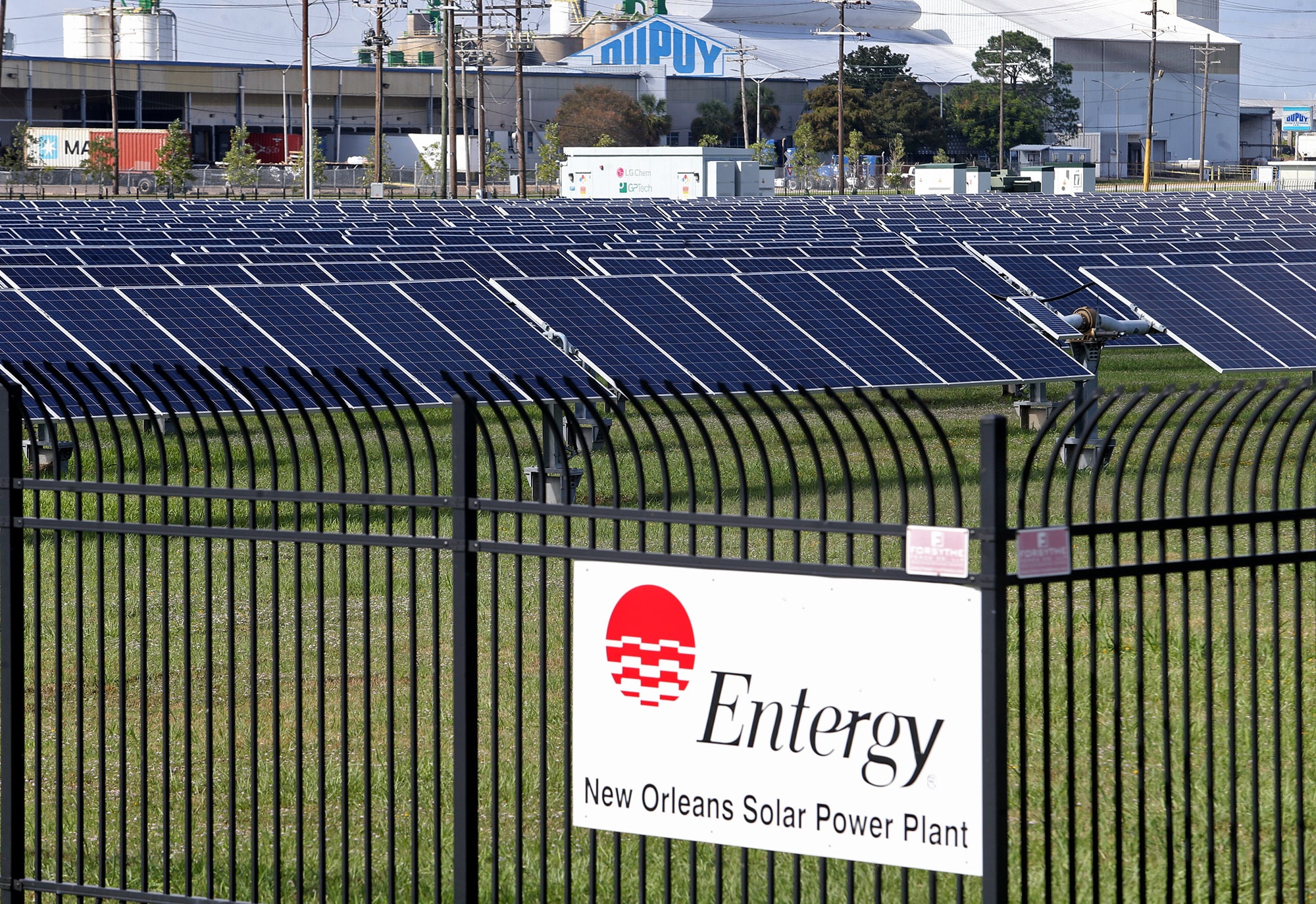Ask New Orleanians to locate the city’s first-ever solar power plant on a map and you’re likely to get some puzzled looks. Three years after opening, the neat rows of solar panels lining a grassy site off Chef Menteur Highway in New Orleans East are still a surprise to many.
The panels – about 4,200 in all – angle toward the sky in an industrial area at the foot of the Danziger Bridge as nearby traffic whooshes and clacks up and over the Industrial Canal toward downtown. On clear days, the rows reflect the sunlight in metallic glints, generating enough electricity to power roughly 160 homes. The canal breeze carries the familiar “bridge smell” of roasting coffee from the nearby Folgers and Luzianne plants.
The search for cleaner energy options
Back in 2016, the Entergy-owned plant was a tiny experiment for a city coming to terms with its vulnerability in a changing climate. Residents were pushing for clean power options like solar instead of gas-fired plants. Entergy New Orleans, skeptical of what it claimed was costly and unreliable power, agreed to a solar test run funded by bill payers.
Fast forward to 2019. The city is about to get a much larger (and much pricier) solar power plant, also located in New Orleans East. In a rare lockstep moment, residents and city and utility officials seem to agree that investing in solar is a wise move.
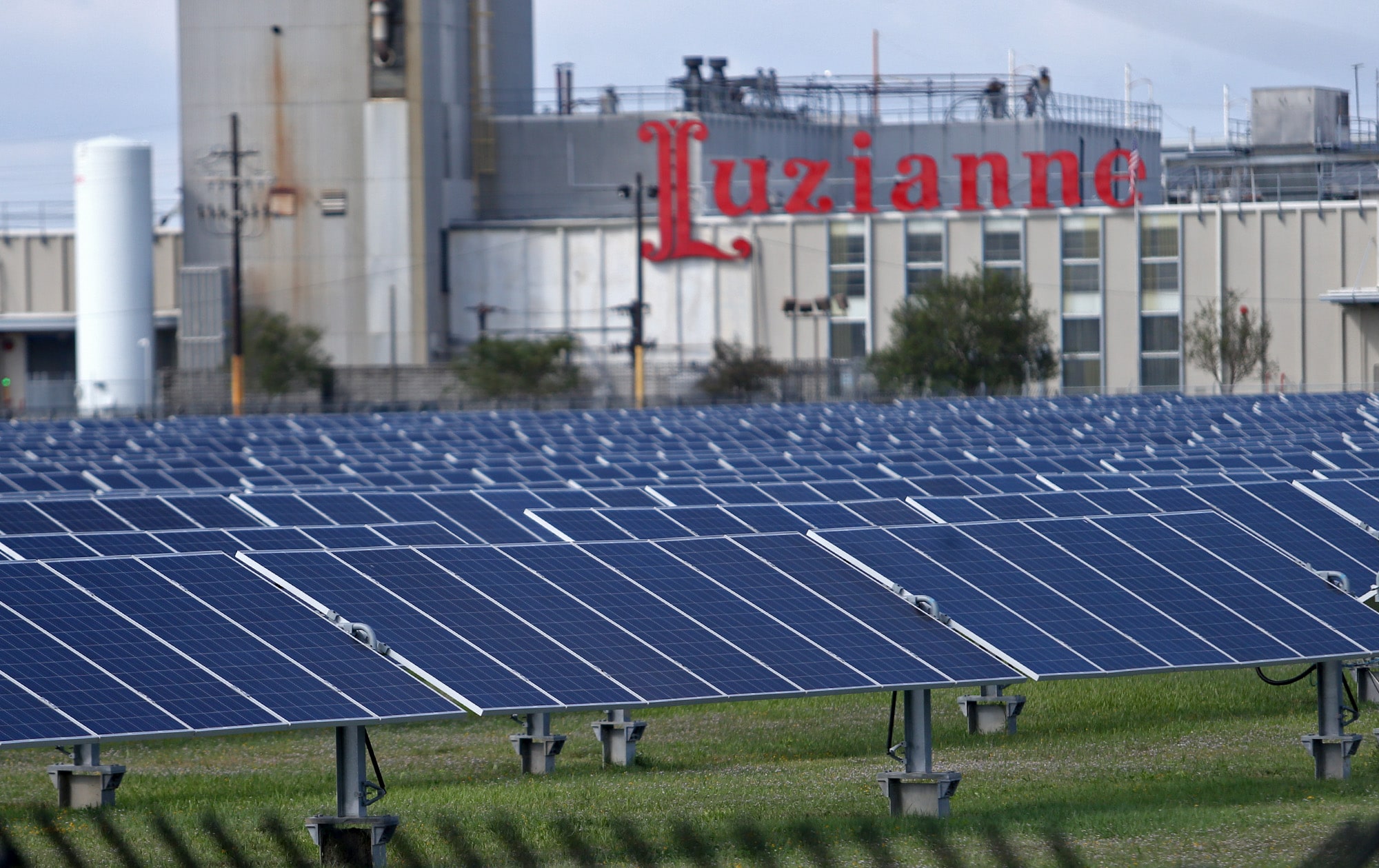
But there’s also plenty to disagree on. How much should we be willing to pay for solar? And who should own it? The East is poised to be on the front line of that debate.
“We’re in a place where huge transformational adjustments are going to be made in the next five to 10 years. That excites me,” said Logan Atkinson Burke, executive director of the Alliance for Affordable Energy, an energy watchdog group. “The challenge is how do we do it in a way that works for everyone and doesn’t leave people behind?”
Today, most of the electricity running your lights, your phone charger and your A/C comes from natural gas-fired power plants. By 2021, a larger share of that power (about 10% of the local electricity supply, to be exact) will come from a solar plant.
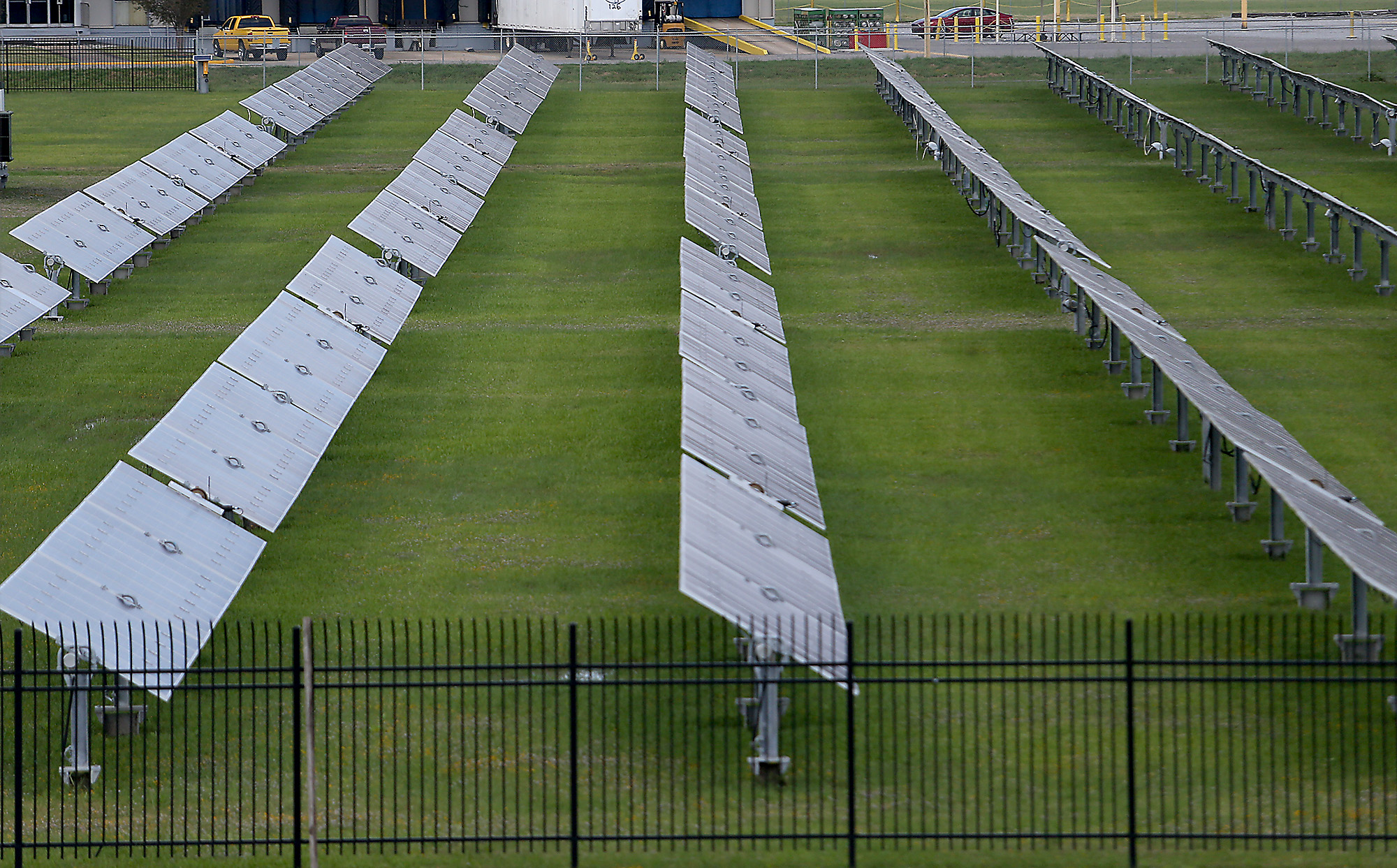
The growth is part of a plan approved by the New Orleans City Council that adds 90 megawatts of solar power to the city’s electric grid over the next year. That’s enough to power roughly 14,500 homes and a 20-fold boost to the city’s existing renewable power mix.
The plan includes a brand new $42 million solar power plant, which Entergy New Orleans will build on NASA-owned land at Michoud Assembly Facility in New Orleans East. The 20-megawatt plant is expected to create up to 537 construction and operations jobs. (It also happens to be a short drive from where Entergy’s controversial gas-fired plant will be built.)
Progress doesn’t come without a price
In a July statement, Councilwoman Helena Moreno, who chairs the council’s utility committee, called the solar plan a “huge step forward” for the city. Environmental and customer advocates also praised the plan, which, in addition to OK’ing a new solar plant, allows Entergy to buy 70 megawatts of power from third-party solar plants in Washington and St. James parishes.
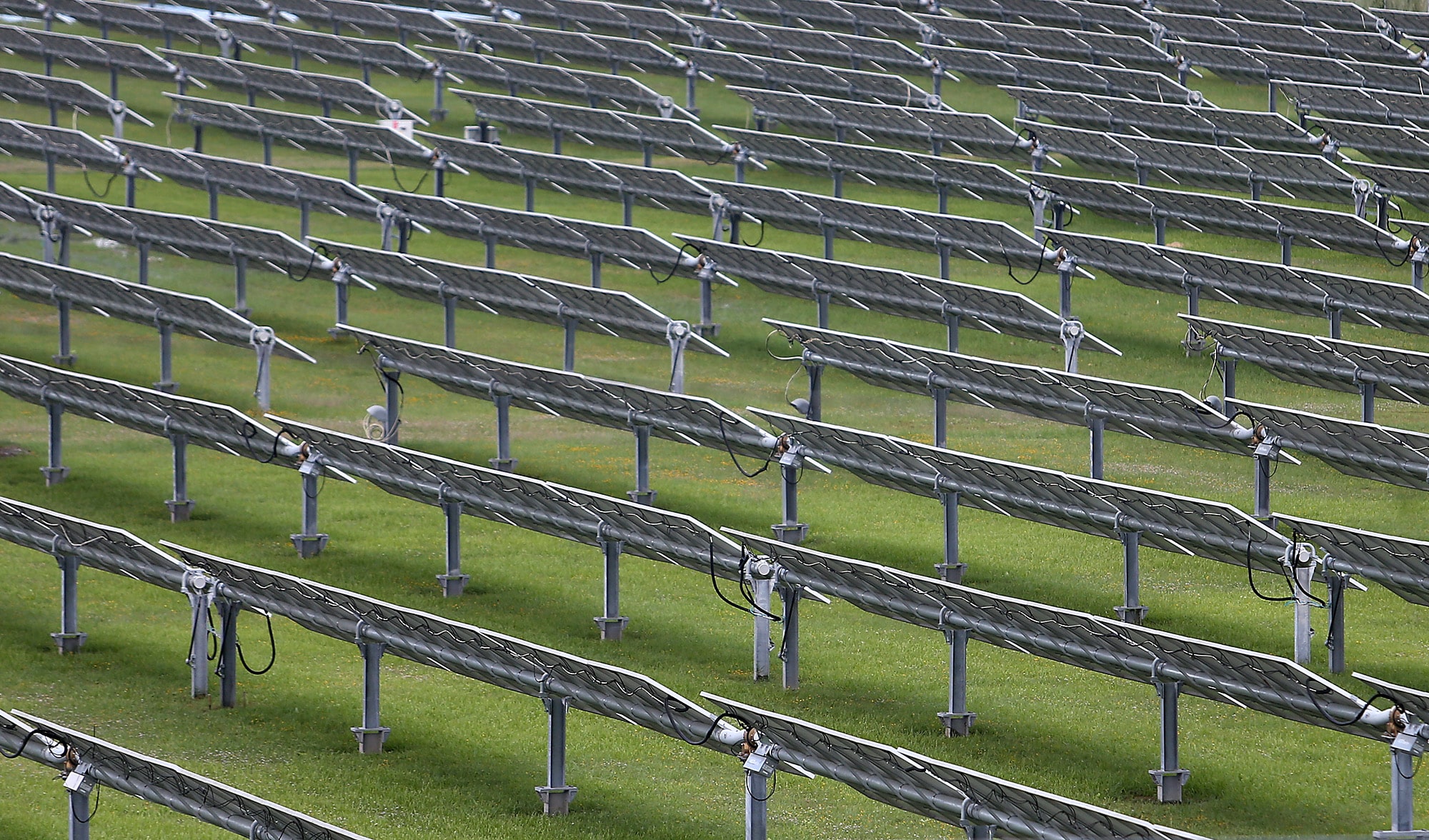
But the solar surge comes with a price tag. Entergy customers will pay $1.50 more on their monthly electricity bill to fund the projects, about $1.13 of which will go to fund the new solar plant, according to The Times-Picayune | New Orleans Advocate.
Even solar cheerleaders think that’s steep.
Jeff Cantin is president of Solar Alternatives, a New Orleans-based solar installer, and a Gulf States Renewable Energy Industries Association board member. His company has completed hundreds of solar projects regionally, from small rooftop systems on homes in Gentilly to a 700-kilowatt project on top of Gretna’s Oakwood Center mall.
It’s good to see New Orleans getting a solar plant, but the City Council needs to find more affordable projects moving forward, he said.
“How do we encourage property owners to develop solar themselves? And how do we direct the utilities to affordably put solar projects within city limits and tie jobs to those? That’s what the city’s opportunity is,” Cantin said.
Seeing Entergy get on board with solar is a positive, but the July deal shows large-scale, utility-owned plants are too expensive, said Monique Harden, assistant director for public policy at the Deep South Center for Environmental Justice.
“Entergy is recognizing it can’t keep selling us the same old gas-fired power plant and expect to survive,” Harden said. “They’re now moving into solar power, but they want to be able to corner the market and charge us through the nose for it. That’s where we say ‘No.’”
Entergy New Orleans did not respond to a request for comment after multiple calls, emails and text messages sent by this reporter on behalf of Very Local New Orleans over several weeks. An Entergy spokeswoman did not respond to an email with written questions.
In July, Entergy New Orleans CEO David Ellis said the utility is dedicated to fighting climate change “with all resources available while maintaining the lowest rates possible for our customers.”
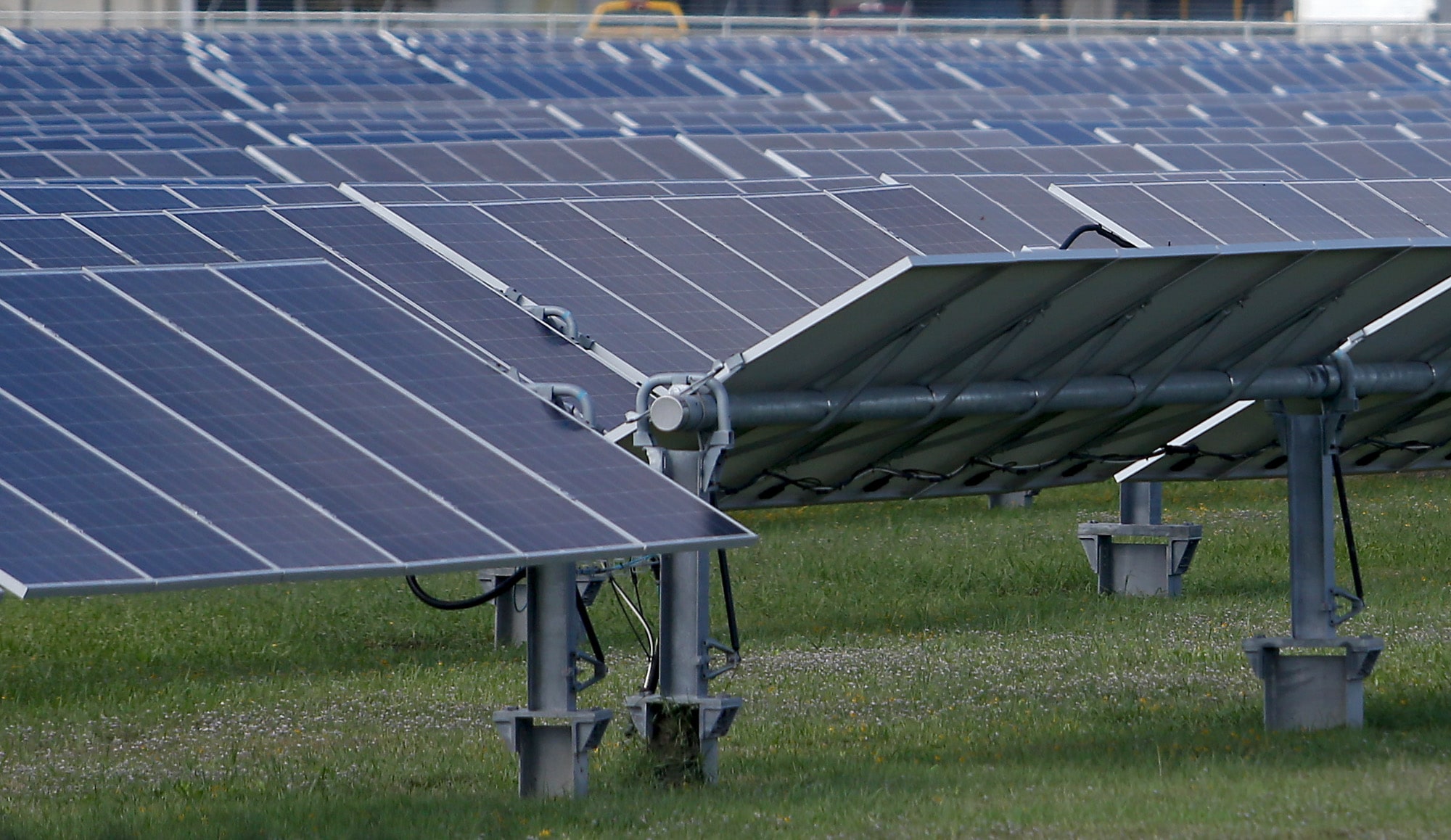
That said, Entergy has fiercely defended its interest in making and selling the electricity Louisiana customers use. It has been a staunch opponent to net metering rules, which allow residents who install solar on their homes to get paid a retail rate for any unused electricity they send back to the power grid. The rules remain in place in New Orleans, but were recently struck down in the rest of the state.
Residents leading the way
Here in New Orleans, residents have largely led the push for solar. Burke noted residents have installed roughly 40 megawatts of small-scale solar power systems on their rooftops. That compares with 3.5 megawatts installed by Entergy. That total includes 2.5 megawatts of solar panels the utility put in on several warehouse rooftops near the Industrial Canal in early 2019. Meanwhile, large, privately funded commercial projects – the 2,000-panel Oakwood Center project, for example – are taking shape.
For clean energy advocates, the future of New Orleans solar rests somewhere between massive, utility-scale solar plants and the small rooftop systems that dot homes from Uptown to New Orleans East. They point to so-called “community solar” projects as a way to meet solar demand without breaking the bank.
Community solar projects give residents (including apartment renters) the option to lease or buy a portion of the power produced at a nearby solar facility. These subscribers then receive a credit on their power bills for their share. Such projects can be owned by a utility like Entergy, a third-party developer, or even a collective of local businesses or nonprofits.
Last year, the City Council voted to start writing rules for a local community solar program. That’s a “huge deal,” Burke said.
A formal program will “unlock access to renewables that lots of people want, but don’t have access to now,” Burke said. “It also means that large businesses and even nonprofits can invest in these kinds of things.”
Community solar projects can be as small as a city block, which lowers their overall cost, Cantin noted. New Orleans has dozens of unused former industrial sites citywide that could support these types of projects, he added.
New Orleans East could be on the forefront of the community solar movement even as Entergy’s $42 million solar power plant goes up in its backyard.
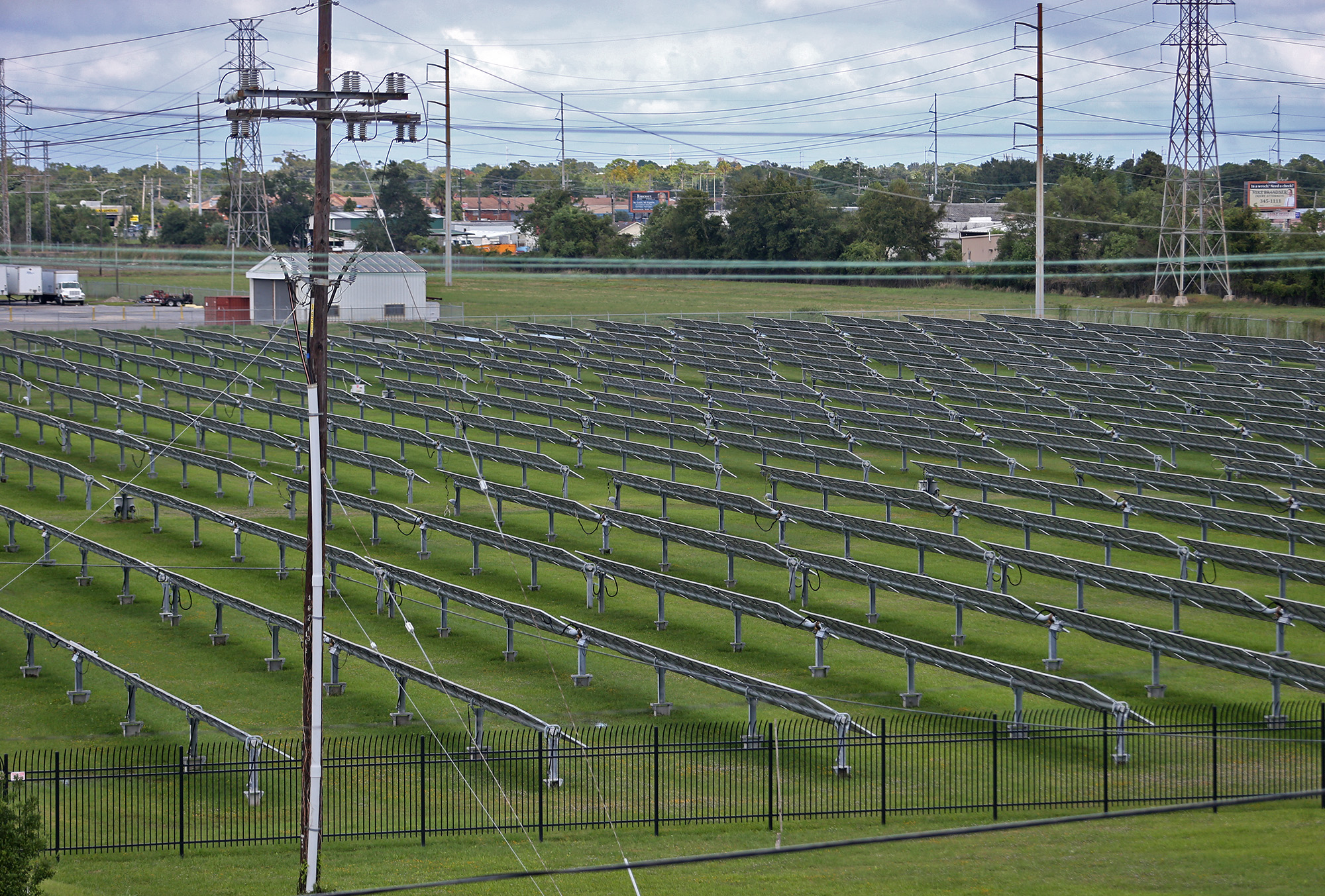
Harden said local church leaders, including those in the East, are very interested in solar. Many churches have congregants who struggle to cover their bills. They see solar as a way to help reduce their costs, she said.
New Orleans needs to work to encourage those types of solar projects, Harden said.
“The more solar is in the hands of the people, the better off we will all be,” she said.

